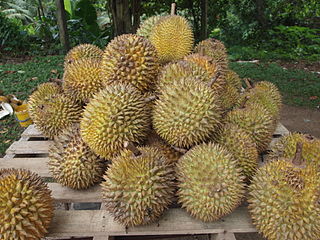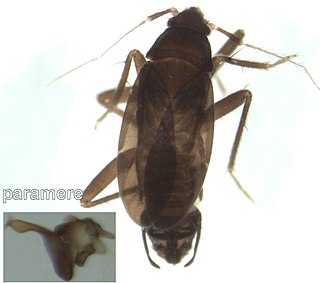
Sharks are a group of elasmobranch fish characterized by a cartilaginous skeleton, five to seven gill slits on the sides of the head, and pectoral fins that are not fused to the head. Modern sharks are classified within the clade Selachimorpha and are the sister group to the rays. However, the term "shark" has also been used for extinct members of the subclass Elasmobranchii outside the Selachimorpha, such as Cladoselache and Xenacanthus, as well as other Chondrichthyes such as the holocephalid eugenedontidans.

Coronaviruses are a group of related RNA viruses that cause diseases in mammals and birds. In humans and birds, they cause respiratory tract infections that can range from mild to lethal. Mild illnesses in humans include some cases of the common cold, while more lethal varieties can cause SARS, MERS, and COVID-19. In cows and pigs they cause diarrhea, while in mice they cause hepatitis and encephalomyelitis.

Skinks are lizards belonging to the family Scincidae, a family in the infraorder Scincomorpha. With more than 1,500 described species, the family Scincidae is one of the most diverse families of lizards.

Wildlife conservation refers to the practice of protecting wild species and their habitats in order to maintain healthy wildlife species or populations and to restore, protect or enhance natural ecosystems. Major threats to wildlife include habitat destruction/degradation/fragmentation, overexploitation, poaching, pollution and climate change. The IUCN estimates that 27,000 species of the ones assessed are at risk for extinction. Expanding to all existing species, a 2019 UN report on biodiversity put this estimate even higher at a million species. It's also being acknowledged that an increasing number of ecosystems on Earth containing endangered species are disappearing. To address these issues, there have been both national and international governmental efforts to preserve Earth's wildlife. Prominent conservation agreements include the 1973 Convention on International Trade in Endangered Species of Wild Fauna and Flora (CITES) and the 1992 Convention on Biological Diversity (CBD). There are also numerous nongovernmental organizations (NGO's) dedicated to conservation such as the Nature Conservancy, World Wildlife Fund, and Conservation International.

Monkey is a common name that may refer to groups or species of mammals, in part, the simians of infraorder Simiiformes. The term is applied descriptively to groups of primates, such as families of New World monkeys and Old World monkeys. Many monkey species are tree-dwelling (arboreal), although there are species that live primarily on the ground, such as baboons. Most species are mainly active during the day (diurnal). Monkeys are generally considered to be intelligent, especially the Old World monkeys of Catarrhini.

The Elkhorn Slough National Estuarine Research Reserve is a nature reserve that is located at 1700 Elkhorn Road in Watsonville, California. The reserve encompasses the central shore of Monterey Bay and is approximately 100 miles (160 km) south of San Francisco, California. The Elkhorn Slough is established as a part of the National Oceanic and Atmospheric Administration and is being managed as the Elkhorn Slough Ecological Reserve through the California Department of Fish and Game.

Homalonychus is a genus of araneomorph spiders, and is the only genus in the family Homalonychidae. It was first described by George Marx in 1891. As of May 2019 it contains only three species: H. raghavai, H. selenopoides, and H. theologus. Two are found in the southern United States and Mexico: H. theologus is mostly found west of the Colorado River, while H. selenopoides is mostly found to the east, with some populations in Death Valley and near Mercury, Nevada.
The National Biodiversity Network (UK) (NBN) is a collaborative venture set up in 2000 in the United Kingdom committed to making biodiversity information available through various media, including on the internet via the NBN Atlas—the data search website of the NBN.
The Mindoro stripe-faced fruit bat, nicknamed the "flying fox" for its foxlike face, is a species of large Philippine megabat. It is endemic to the island of Mindoro. The Mindoro stripe-faced fruit bat ranked sixth in the top ten species of 2008, selected by the International Institute for Species Exploration.

Blueberries are perennial flowering plants with blue or purple berries. They are classified in the section Cyanococcus within the genus Vaccinium. Vaccinium also includes cranberries, bilberries, huckleberries and Madeira blueberries. Commercial blueberries—both wild (lowbush) and cultivated (highbush)—are all native to North America. The highbush varieties were introduced into Europe during the 1930s.

The durian is the fruit of several tree species belonging to the genus Durio. There are 30 recognised Durio species, at least nine of which produce edible fruit, with over 300 named varieties in Thailand and 100 in Malaysia, as of 1987. Durio zibethinus is the only species available in the international market: other species are sold in their local regions. It is native to Borneo and Sumatra.
Actenobius is a genus of beetles in the family Ptinidae. It contains two species, one extinct, Actenobius magneoculus, and one extant species, Actenobius pleuralis.

The 2020 UEFA European Football Championship, commonly referred to as UEFA Euro 2020 or simply Euro 2020, is scheduled to be the 16th UEFA European Championship, the quadrennial international men's football championship of Europe organised by the Union of European Football Associations (UEFA).

Wildlife farming refers to the raising of traditionally undomesticated animals in an agricultural setting to produce: living animals for canned hunting and to be kept as pets; commodities such as food and traditional medicine; and materials like leather, fur and fiber.

Cymidae is a family of true bugs in the order Hemiptera. There are about 12 genera and at least 60 described species in Cymidae.

Artheneidae is a family of true bugs in the order Hemiptera. It was formerly included in Lygaeidae. There are about 7 genera and at least 20 described species in Artheneidae.

Ceratocombidae is a family of litter bugs in the order Hemiptera. They are closely related to the Dipsocoridae. There are at least 3 genera and 20 described species in Ceratocombidae. The forewing has 2 to 3 large cells and body does not have any strong bristles and there is no central eye bristle. Their diversity is greatest in the Indo-Pacific region.

The Central Park mandarin duck, also known as Mandarin Patinkin or the Hot Duck, is a male mandarin duck seen at the Pond in New York City's Central Park starting in late 2018. Its colorful appearance, which contrasted with native waterfowl, combined with its presence far outside of the species' native range of East Asia, led to media attention from late 2018 through 2019. Though it has a band around its leg, its origin is undetermined. Its last sighting was in March 2019.
The UPF-Centre for Animal Ethics (UPF-CAE) is a think tank based at Pompeu Fabra University. It aims to disseminate and promote non-anthropocentric and non-speciesist ethical perspectives in academia, politics and the media. The centre was established in December 2015 and is the first centre of its kind in both Catalonia and Spain. Its main activities include the co-organization of the 6th Conference of the European Association for Critical Animal Studies, together with the European Association for Critical Animal Studies. The centre's Media Observatory of Speciesism was launched in 2018, it analyzes the treatment of animals in the media from an anti-speciesist perspective and makes recommendations for ending speciesism in the media.














